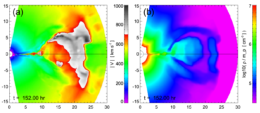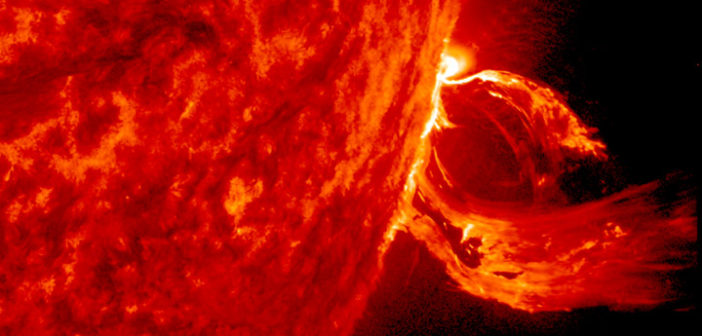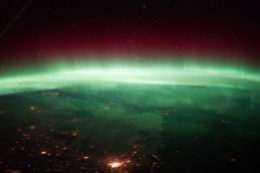With energies a thousand times greater than an average solar flare, stellar superflares can strip away atmospheres and endanger life on planetary surfaces. These violent outbursts often go hand in hand with coronal mass ejections, shaping the evolution of planets near and far.
A Bit of Solar System History
In 1859, a solar storm launched a coronal mass ejection toward Earth. Named after one of the British astronomers who dutifully recorded the associated solar flare, the Carrington event is one of the most powerful solar storms to impact the Earth in recorded history.Luckily for us, our middle-aged Sun rarely throws tantrums that explosive; if it happened today, the Carrington event would fry spacecraft electronics and power grids, causing trillions of dollars of damage.
In the Sun’s wilder youth, however, superflares were likely common. Studying younger Sun-like stars, like 700-million-year-old κ1Cet, can help us understand what the Sun was like billions of years ago — and what the planets orbiting young stars may be subjected to today.

Simulation of the coronal mass ejection magnetic flux rope propagating away from the star, as seen from the star’s north pole. [Lynch et al. 2019]
Simulating a Global Superflare
A team of astronomers led by Benjamin Lynch (University of California-Berkeley) used three-dimensional magnetohydrodynamic models to study the eruption of a superflare and a coronal mass ejection from the young Sun-like star κ1Cet.
They started with observations of κ1Cet’s surface magnetic field, then modeled how the stellar wind drags the magnetic field outward. By setting the star’s surface in motion, they caused the field lines to become twisted and tangled, building up the magnetic energy.
The magnetic energy gradually increased until reconnection kicked in and launched a coiled rope of magnetic flux into space. The eruption of the modeled coronal mass ejection lasted 10 hours and released a whopping 3 × 1026 Joules — about the same amount of energy estimated to have been released by the Sun in the 1859 Carrington event.

Radial cuts showing the speed (left) and density (right) of the coronal mass ejection. [Adapted from Lynch et al. 2019]
An Effect to Consider
Lynch and coauthors note that their model captures the most extreme superflare that κ1Cet can release based on past observations of the star’s surface magnetic flux. However, because starspots aren’t resolved in those observations, it’s possible that they could contain even more magnetic flux than expected, leading to even more energetic outbursts.
The authors hope that models of stellar superflares and coronal mass ejections can be used to understand how stellar activity affects planetary systems. They pointed to the importance of taking into consideration the effects of flares and coronal mass ejections on the habitability of exoplanets, not all of which are bad: when energetic particles from these events enter a planet’s atmosphere, they can generate compounds like hydrogen cyanide, which may play a role in the formation of the building blocks of life.
Citation
“Modeling a Carrington-scale Stellar Superflare and Coronal Mass Ejection from k1Cet,” Benjamin J. Lynch et al 2019 ApJ 880 97. doi:10.3847/1538-4357/ab287e

